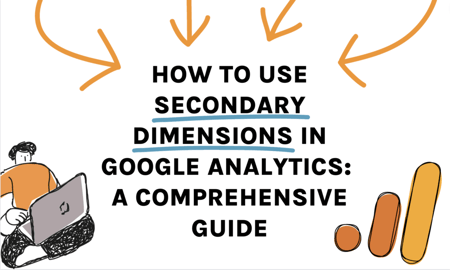Optimizing SEO Efficiency with Secondary Dimensions: Ideal Practices
Optimizing SEO Efficiency with Secondary Dimensions: Ideal Practices
Blog Article
Transform Your Data Recognizing With Second Measurements
Checking out data through the lens of second measurements opens a realm of untapped understandings, using a much more nuanced perspective on the intricacies of your dataset. By unraveling the layers under the surface area metrics, you can uncover patterns and partnerships that might have otherwise gone undetected, leading the way for educated decision-making and calculated optimizations. This tactical utilization of additional dimensions not just enhances your information understanding yet likewise offers as a driver for unlocking the complete capacity of your analytics undertakings.
Benefits of Additional Measurements

Secondary measurements likewise make it possible for companies to perform even more detailed performance examinations. By layering added measurements onto existing information, organizations can evaluate the effect of numerous factors on crucial metrics, assisting them make more informed decisions. In addition, second measurements facilitate the identification of brand-new chances for optimization and development by revealing relationships that may have otherwise gone unnoticed. On the whole, the utilization of secondary dimensions leads to much more insightful and robust information analysis, empowering companies to drive tactical actions based on a much deeper understanding of their information.

How to Apply Secondary Measurements
To efficiently execute additional measurements in information analysis, organizations need to initially recognize essential variables that straighten with their analytical goals and purposes. It is essential to consider just how these additional dimensions will provide added context and deepness to the primary data being assessed.

Studying Information With Additional Measurements
Using secondary measurements in information analysis boosts the deepness and context of understandings originated from main data. By incorporating second measurements into your analysis, you can obtain an extra thorough understanding of the connections and patterns within your data. This procedure includes taking a look at the main data via various lenses or perspectives, which can disclose concealed connections or trends that may not be promptly obvious when analyzing the information utilizing just main measurements.
Examining data with second dimensions permits you to section and team your data in various methods, offering an extra nuanced view of your dataset. secondary dimensions. This division can help you recognize particular variables that may be affecting the outcomes you are researching. By drilling down right into the data utilizing second dimensions, you can reveal valuable understandings that can guide decision-making and method advancement
Ideal Practices for Additional Measurements
When integrating second dimensions right into data evaluation, accuracy in defining the measurements is vital for extracting significant understandings. It is vital to pick additional dimensions that match the key data successfully. One best practice is to choose measurements that offer added context without overwhelming the analysis. Bear in mind the specific objectives of the analysis and select measurements that straighten with those goals.
An additional best practice is to prevent redundancy in measurements. Make sure that the second measurements add brand-new perspectives or details to the evaluation, as opposed to replicating details currently existing in the key measurements. This will certainly assist stop confusion and improve the interpretation of the data.
Additionally, it is essential to think about the scalability of the analysis when choosing additional dimensions. Choose measurements that can be conveniently broadened or changed as required to fit future data requirements or changes in logical emphasis. By complying with these finest practices, experts can take full advantage of the value of secondary measurements in information analysis and gain much deeper understandings into their datasets.
Optimizing Insights With Secondary Measurements
Integrating additional dimensions purposefully improves data evaluation by giving article a much deeper understanding of the connections within the dataset (secondary dimensions). By optimizing understandings with secondary measurements, analysts can reveal useful patterns, informative post trends, and dependencies that might not be quickly evident when taking a look at the data with primary measurements alone
One secret advantage of making use of additional dimensions is the capacity to section and filter data more specifically. This segmentation permits an extra granular analysis of specific subsets within the dataset, enabling experts to identify relationships and causations that may have or else been neglected.
Furthermore, second dimensions can help in contextualizing main data factors by adding layers of information that supply an even more thorough sight of the data. This contextualization is essential for making educated choices based on an alternative understanding of the dataset.
Final Thought
In verdict, integrating additional measurements in data evaluation procedures supplies a much more nuanced and comprehensive understanding of details, leading to boosted insights and tactical decision-making. By integrating extra variables that straighten with logical objectives, concealed trends and connections can be exposed, supplying an extra thorough and contextualized sight of information. This approach maximizes the potential for optimization and discovers new chances within operations.
In general, the usage of additional dimensions leads to much more robust and insightful information evaluation, encouraging organizations to drive tactical activities based on a much deeper understanding of their information.
Using additional dimensions in data evaluation boosts the deepness and context of understandings obtained from primary data.Analyzing information with additional dimensions enables you to segment and group your information in different methods, supplying a much more nuanced view of your have a peek here dataset.When incorporating secondary measurements right into data evaluation, accuracy in defining the dimensions is important for extracting meaningful understandings. Make sure that the additional dimensions add brand-new perspectives or information to the evaluation, instead than replicating info already existing in the main dimensions.
Report this page